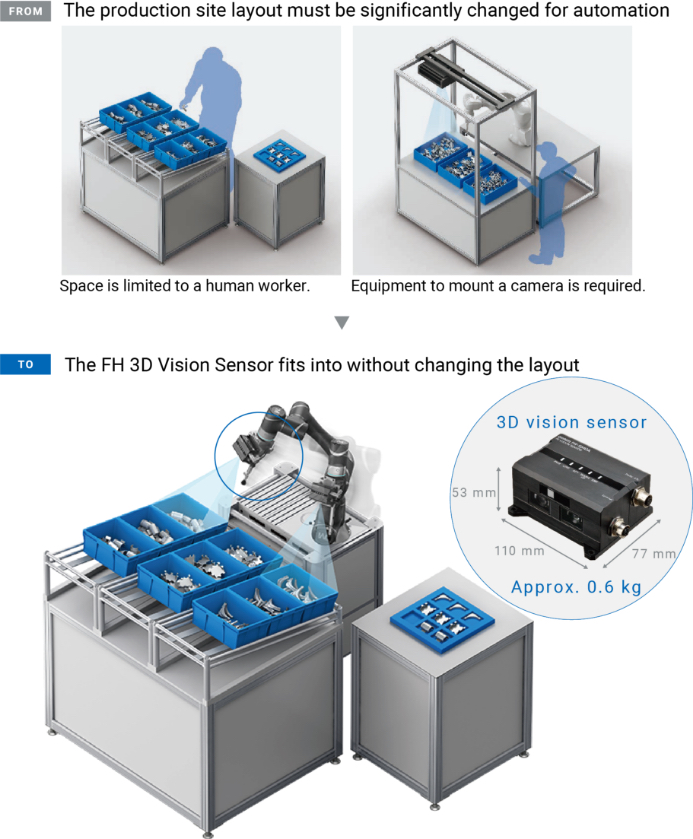Omron releases new 3D vision sensor for robot arms
Omron has released its new FH-SMD Series 3D Vision Sensor, which can be mounted on a robot to recognize randomly placed bulk automotive parts in three dimensions, enabling space-saving assembly, inspection, and pick and place, which are difficult with conventional robots, and improving productivity.
Production workers are hard to come by these days, and labor costs have risen sharply, says Omron. Manufacturers are now facing intense pressure to automate processes that rely on the senses of experienced human workers.
Moreover, production workers now need to work harmoniously with machines to raise productivity amid the Covid-19 crisis. In particular, the automotive industry requires vision sensors as the eyes of robots that are indispensable for automation because it is difficult for machines to recognize positions and postures of various complex shaped parts.
However, conventional large 3D vision sensors take a long time to detect status of targets as well as needing large spaces and large mounting equipment. These are barriers to installation into preexisting spaces and automation that provides human-level performance.
The new FH-SMD Series 3D Vision Sensor is small and light enough to be mounted on a robot arm, eliminating the need for special mounting equipment and thus saving space.

This sensor can be moved to change the viewpoints and easily recognize parts, reducing blind spots and providing reliable detection. In addition, the newly developed 3D measurement technology enables part detection in approximately 0.4 seconds regardless of the shape and location. Bulk parts assembly can be automated smoothly, says Omron.
Some of the features of Omron’s new 3D vision sensor:
- Fits in preexisting compact spaces: The small and light 3D vision sensor for robot arms saves installation space. There is no need for big mounting equipment and a major layout change which are required for other 3D vision sensors.
- Faster cycle time thanks to “human-like speed” and flexibility: High-speed detection in approximately 0.4 seconds makes picking smooth. High-speed detection is accomplished by 3D measurement technology to create 3D shape images and 3D recognition technology to recognize the position and posture of targets.
- Easy setup without manuals: The wizards guide you step-by-step through setting up a picking application, from camera setup to calibration.

